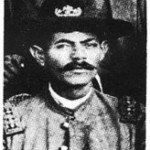- El Payasito, Pico Blvd
- El Payasito, Pico Blvd, LA
In large parts of the LA economic ecosystem, immigrants alone participate.
The other day I happened on El Payasito, one of the great stores in LA. It sells all that anyone needs for a Mexican birthday party.
It’s owned by an Iranian immigrant named Sam, who wouldn’t give me his last name and didn’t want to be photographed.
He was a civil engineer in Iran and left after the Iranian Revolution. He owned an auto shop with a cousin for a while. Then saw that a much larger shop had burned on Pico Blvd, in Pico-Union, bought it and was renovating the place. He put a few things out for sale, and people snapped them up.
So instead of a auto shop, it became a kind of thrift store for a few years, selling remainders. Then a salesman for a party supply shop came by and begged him to let him open up two aisles of the store to his products. Sam did and they sold immediately. He opened more aisles, and sold out again.
He renamed the store El Payasito (Little Clown) and learned some Spanish and that’s how he’s spent the last 25 years: selling candy, cups, plates, toys, tortilla holders, candles, pots, pans and a lot more from his converted body shop on Pico. Dozens of pinatas — which he gets from Tijuana, and some from LA, and are the only thing in his store not from China, apparently — hang from his ceiling.
“The Latino market is just huge,” he told me. “When they make it they spend it.”
I’m fascinated by the immigrants who’ve made a living here selling Mexicans the most intimate parts of their culture: parties, food, clothes. I wrote a story years ago for the LA Times on just this. Had I known about El Payasito then, I would have included it.
Sam’s is worthy of a Chekhov short story. An immigrant engineer, fleeing political upheaval comes to a new land and ends up selling party supplies to Mexicans. Man, I love that story.
“You get into what you have to get into to survive in this country,” he said.














